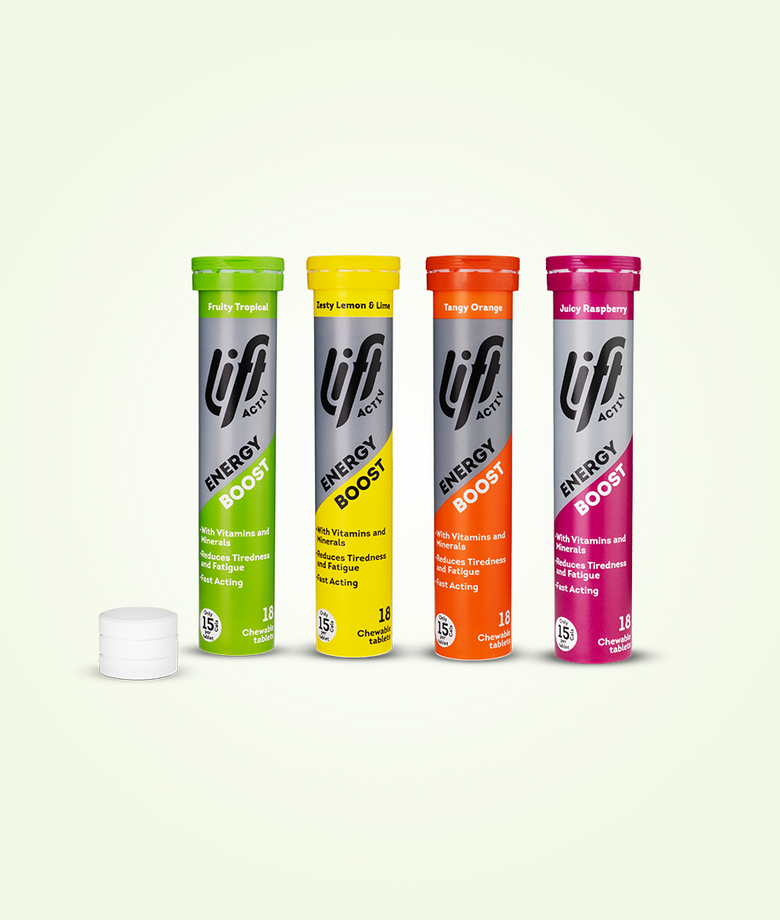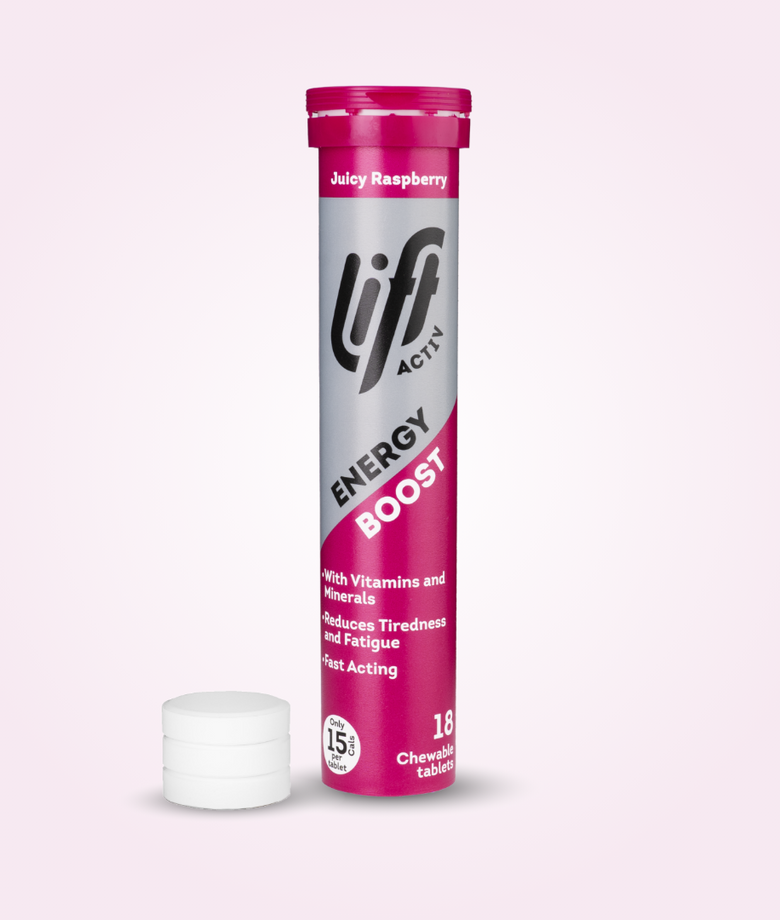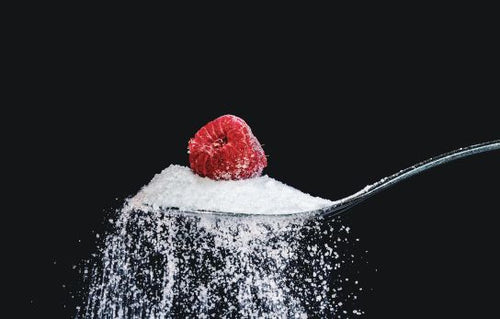The Science behind Glucose
The human body runs on glucose, a type of sugar found in many of the foods you consume. It is partly responsible for that spurt of energy you get during physical workouts and the more active you are, the more energy you burn.
A healthy person’s glucose level typically ranges between 4 – 5.9mmol/L before eating. If this level goes below 4mmol/L you should take immediate action to bring it back up to avoid the potentially harmful symptoms of low blood sugar (hypoglycaemia).
Glucose Chewable and shots, quick-release glucose tablets and drinks are a rapidly acting supplement for people with diabetes, hypoglycaemia, and anyone at risk of low blood sugar.
Types of sugar/what are the differences?
There are 3 main forms of sugar we typically consume – glucose, fructose, and sucrose. Sugars are an important source of energy for the human body as well as an essential additive in many food preparation processes.
Glucose and dextrose are the same thing. The names “Glucose” and “Dextrose” are often used interchangeably. Formally known as Dextrose Monohydrate or D-Glucose, dextrose is the most common type of glucose.
Why is glucose important?
Glucose is a type of sugar you get from foods you eat, and your body uses it for energy. Think of the human body as an engine and glucose as the fuel it needs to run. Blood glucose or blood sugar is the amount of glucose travelling through your bloodstream to your cells at any given time.
The presence of glucose in the blood triggers the pancreas to release insulin which helps the cells to absorb it from the bloodstream. People with diabetes are unable to manage their body’s insulin and may need to take insulin shots to regulate their blood sugar levels.
Without glucose, the body does not have enough energy to function properly. A healthy blood glucose level typically ranges between 3.9 – 7.1 mmol/L. This figure changes at various times of the day depending on our eating habits and lifestyle.
You may experience the potentially harmful symptoms of low blood sugar if this level goes below 4.0 mmol/L. When this happens, you should take immediate action to bring it back up to prevent symptoms from worsening.
People with diabetes should check their blood sugar level with a glucometer if they begin feeling symptoms of hypoglycaemia. It is important to begin treatment as soon as possible if you or someone around you experiences any of the signs below.
Glucose – The Body’s Primary Source of Energy
When we eat, our digestive system breaks down the food to create glucose which is the body’s primary source of energy. Glucose is the most common form of simple sugar found in living organisms. Once we consume glucose and it is absorbed into the blood, we typically refer to it as blood glucose or blood sugar.
Glucose is necessary to keep the body functioning properly and a sudden rise or decline in our blood sugar levels can produce unhealthy effects. Your body makes glucose from foods rich in carbohydrates like bread, fruits, and dairy products.
You can also get glucose on-demand from quick-release glucose supplements which are an effective treatment for hypoglycaemia – a condition characterised by a decline in blood sugar. People with diabetes must be especially careful about their glucose levels.
How do We Process Glucose?
Our blood sugar levels rise and fall at different times of the day, depending on our physical activities and when we last ate. We get all the glucose our body needs from the food and drink we consume. A healthy person’s glucose level typically ranges between 4 – 7mmol/l before eating.
This level can go as high as 8.5 – 9mmol/l for up to two hours after eating. To help your cells absorb glucose, the pancreas produces insulin, a hormone that breaks down glucose. As this happens, the blood sugar levels drop until our next meal.
Diabetes occurs when the body doesn’t produce sufficient amounts of insulin or cannot effectively use the insulin which is produced. People with this condition need an external source of insulin (mainly from insulin injections) to regulate their glucose levels.
Molecular Characteristics of Glucose
Glucose occurs naturally in two distinct types of molecular arrangements known as L-glucose and D-glucose isomers. These glucose isomers both contain identical molecules but are arranged in a mirror reflection of each other. While D-glucose isomer polarises light clockwise, the L-glucose isomer polarises light anticlockwise.
D-glucose is found naturally in plants and vegetables. L-glucose, on the other hand, does not occur naturally in nature, but can be synthesised in the laboratory. D-glucose is often referred to as Dextrose, they are one and the same and are biochemically identical to the glucose are bodies need.
Naturally Occurring Sugars
Dextrose is a form of glucose found in naturally occurring foods such as corn, fruits, and honey. Whilst dextrose, sucrose and fructose are all simple sugars, the impact each has on blood sugar levels varies can vary. Due its molecular make up, dextrose scores 100 on the glycaemic index as it raises blood glucose levels very quickly. Comparatively, sucrose and fructose score 65 and 19 on the GI scale.
Dextrose is also about 20% less sweet tasting than sucrose, which is why sucrose is often used as a sweetener in processed foods.
According to the Sugar Association, the majority of dextrose in foods is derived from corn starch. You can find dextrose in many foods, desserts, drinks, snacks, and baked products. It is especially favoured in the food industry for its swelling and preservative benefits while leaving the end product moderately sweet.
Increasing Your Blood Sugar Level with Dextrose
Dextrose is identical to glucose (the names can be used interchangeably) and effective for managing low blood sugar. People with hypoglycaemia or diabetes can be given dextrose orally or intravenously to raise their blood sugar levels very quickly.
Side Effects of Glucose
A side effect of glucose is its ability to increase blood sugar above acceptable levels – a condition known as hyperglycaemia. People with diabetes should be careful when taking glucose as they might not be able to process it as quickly.
Summary
Biochemically, D-glucose and dextrose are identical. This makes dextrose the most efficient source of energy for the body, as unlike other simple sugars, dextrose can be absorbed directly into the blood stream to elevate blood sugar levels, making it a fast-acting treatment for diabetics and people suffering from hypoglycaemia.






